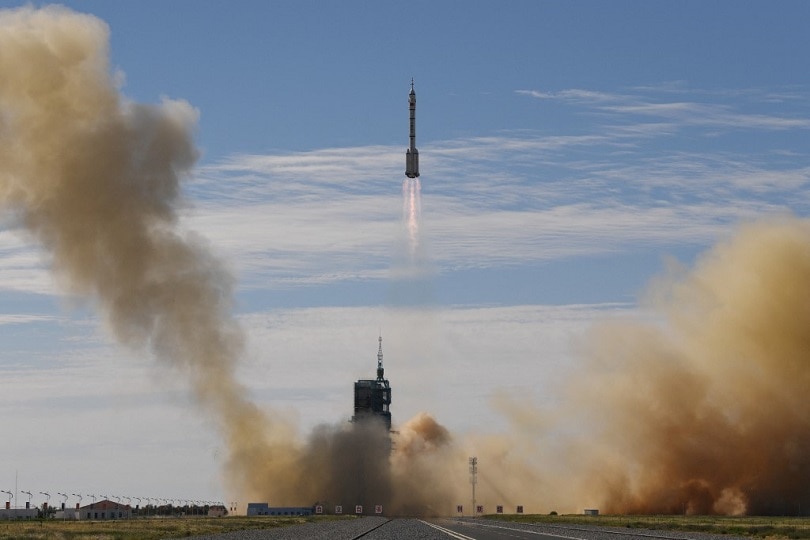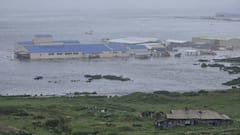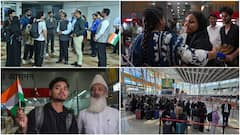China Successfully Launches Crewed Mission For Space Station Construction
Shenzhou-12 spacecraft, atop a Long March-2F carrier rocket, was launched from the Jiuquan Satellite Launch Centre in northwest China's Gobi Desert.

China in the wee hours of Thursday successfully launched its crewed spacecraft. It sent three astronauts to its space station's core module Tianhe for a three-month mission.
The Shenzhou-12 spacecraft, atop a Long March-2F carrier rocket, was launched from the Jiuquan Satellite Launch Centre in northwest China's Gobi Desert. In few minutes after the launch, the mission control announced that the launch was a complete success.

It is China's seventh crewed mission to space and the first during the construction of China's space station, according to the China Manned Space Agency (CMSA).
The three astronauts are commander Nie Haisheng, a 56-year-old veteran who participated in the Shenzhou-6 and Shenzhou-10 missions, Liu Boming, 54, who was part of the Shenzhou-7 mission, and Tang Hongbo, 45, who is in his first space mission.
They are expected to set a new record for China's manned space mission duration, exceeding the 33 days spent by the Shenzhou-11 crew in 2016.
After entering orbit, the Shenzhou-12 spaceship will dock with the in-orbit space station core module Tianhe, forming a complex with Tianhe and the cargo craft Tianzhou-2. The astronauts will be stationed in the core module.
Their work will be more complicated and challenging than the previous crewed missions, according to Hao Chun, director of the CMSA.
The Shenzhou-12 crew will complete four major tasks in orbit. The crew will operate and manage the complex, including the in-orbit test of the Tianhe module, verification of the recycling and life support system, testing and operation training of the robotic arm, as well as management of materials and waste.
After that they will move, assemble and test extravehicular spacesuits and perform two extravehicular activities for work including assembling an extravehicular toolbox, lifting the panoramic camera and installing extended pump sets.
Then they will carry out space science experiments and technology experiments, as well as public outreach activities. Finally, they will manage their own health through daily life care, physical exercise, and regular monitoring and assessment of their health status.
(With PTI Inputs)
Related Video
Breaking: Dehradun Student Murder Sparks Nationwide Outrage, Police Deny Racial Angle Amid FIR Contradictions





































